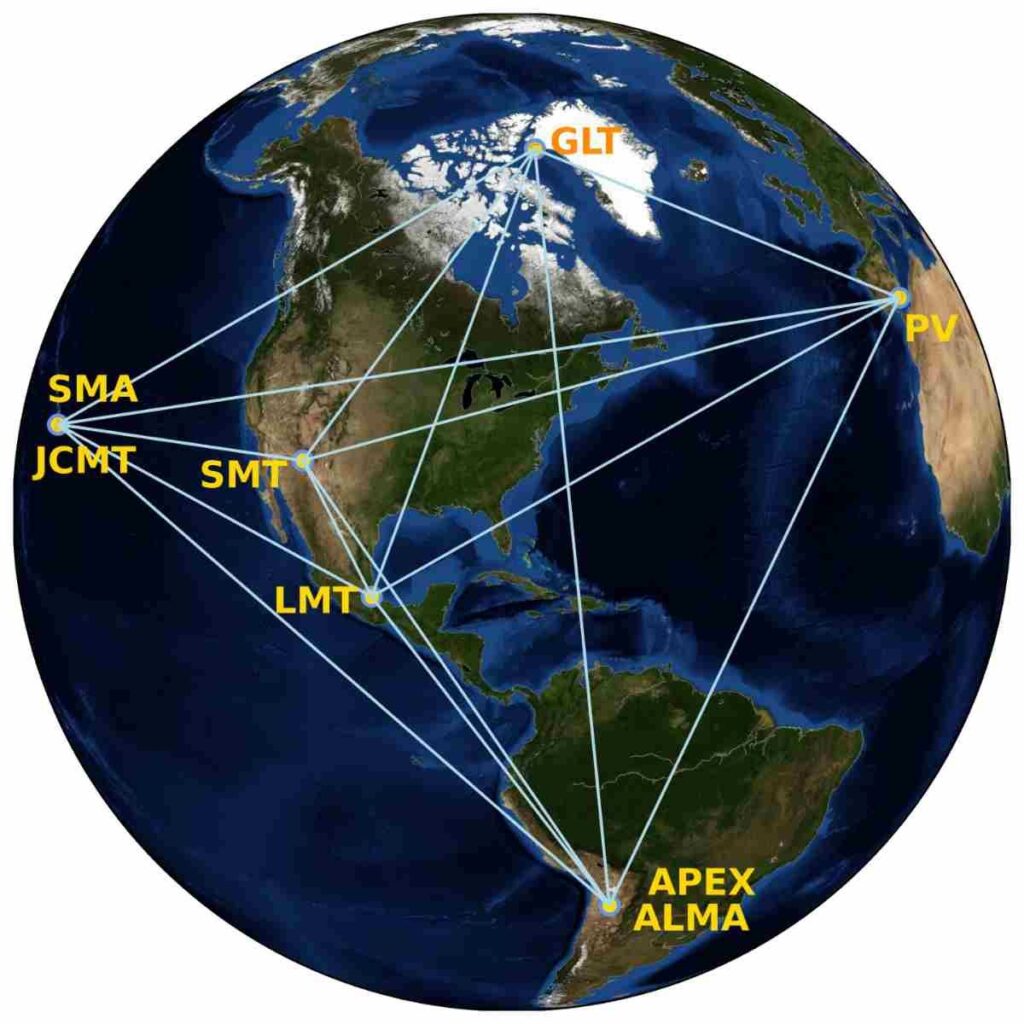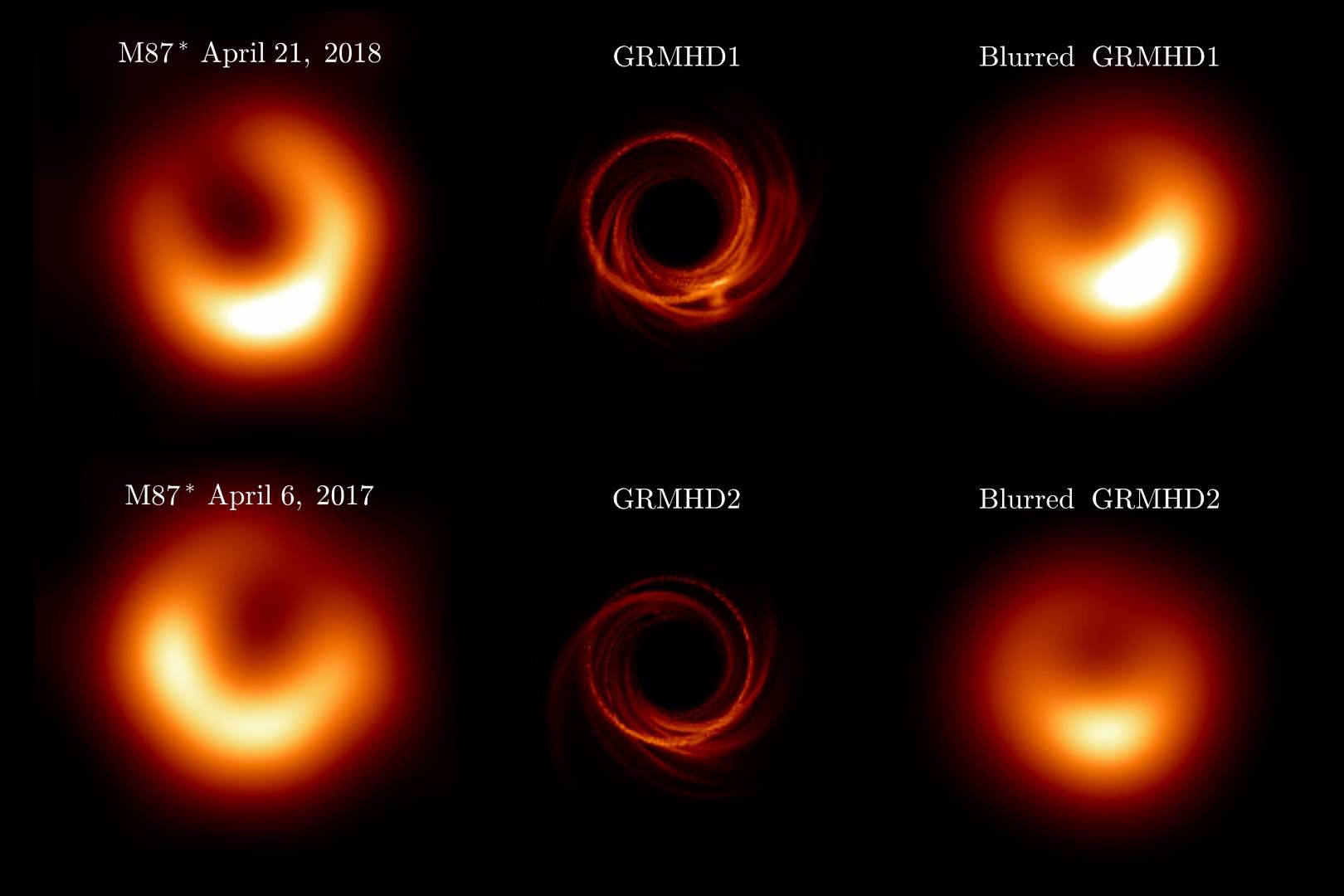A new study by the Event Horizon Telescope (EHT) Collaboration, utilizing observations from 2017 and 2018, has significantly advanced our understanding of the supermassive black hole at the heart of the Messier 87 galaxy (M87*). This research marks a crucial step towards comprehensive, multi-year analyses at horizon scales, enabling a deeper investigation of the black hole’s turbulent accretion flow.
Leveraging a significantly expanded simulation dataset – three times larger than previous efforts – the study incorporates major contributions from the Max Planck Institute for Radio Astronomy (MPIfR) in Bonn, Germany.
“This study underscores the paramount importance of incorporating larger and more diverse simulation sets in our investigation of the supermassive black hole,” explains Christian M. Fromm, a member of the EHT theory group affiliated with the University of Würzburg and the MPIfR. “By integrating multi-epoch data with advanced models, we can gain a more profound understanding of the dynamical processes driving the brightness variations observed near M87*. This approach paves the way for future studies that delve deeper into the complex interplay between plasma dynamics and the black hole’s spin.”
The findings, published in the journal Astronomy & Astrophysics, highlight the dynamic nature of the black hole’s accretion environment. “Since we can treat the 2017 and 2018 observations as independent measurements, we can constrain the black hole’s surroundings with a novel perspective,” adds Hung-Yi Pu, assistant professor at National Taiwan Normal University. “This work emphasizes the transformative potential of observing the black hole evolving over time.”
The 2018 observations reaffirmed the luminous ring observed in 2017, exhibiting a diameter of approximately 43 microarcseconds, aligning with theoretical predictions for the shadow of a 6.5 billion solar-mass black hole. Notably, the brightest portion of the ring exhibited a 30-degree counter-clockwise shift, attributed to turbulence within the accretion disk. This observation aligns with predictions from the 2017 analysis, which anticipated such a shift.

By analyzing accretion models from both years using a substantially larger synthetic dataset, the EHT team investigated the alignment of infalling gas with the black hole’s spin. The observed changes in the ring’s structure are most effectively explained by gas flowing in a direction counter to the black hole’s rotation.
“The 2018 observations, in conjunction with 2017 data, unveil a more nuanced picture of M87*’s accretion flow,” states Eduardo Ros, a scientist at MPIfR. “The study underscores the evolving nature of the plasma structures near the event horizon, providing crucial insights into the variability mechanisms that govern black hole environments. This iterative process of modeling and observation is essential for unraveling the intricate dynamics of black hole environments.”
These findings gain further significance in light of complementary observations of the black hole’s shadow conducted by the Global Millimeter VLBI Array (GMVA) in 2018, which were presented in April 2023. “These observations at 3 mm wavelength, when combined with the EHT’s findings at 1.3 mm wavelength, provide a more comprehensive understanding of the black hole’s environment and its dynamics,” adds Thomas P. Krichbaum, also a scientist at MPIfR and a member of the research team.
Ongoing analysis of EHT data from subsequent years (2021 and 2022) aims to provide more robust statistical constraints and deeper insights into the turbulent flow surrounding M87*.
J. Anton Zensus, director at MPIfR and founding chair of the EHT collaboration, emphasizes the significance of these results. “These findings are a testament to the continuous efforts of the EHT and are corroborated by investigations conducted with the GMVA. They underscore the critical importance of global partnerships, cutting-edge technologies, and persistent research endeavors in advancing scientific progress.”
Reference: The persistent shadow of the supermassive black hole of M87, Astronomy & Astrophysics (2025). DOI: 10.1051/0004-6361/202451296
